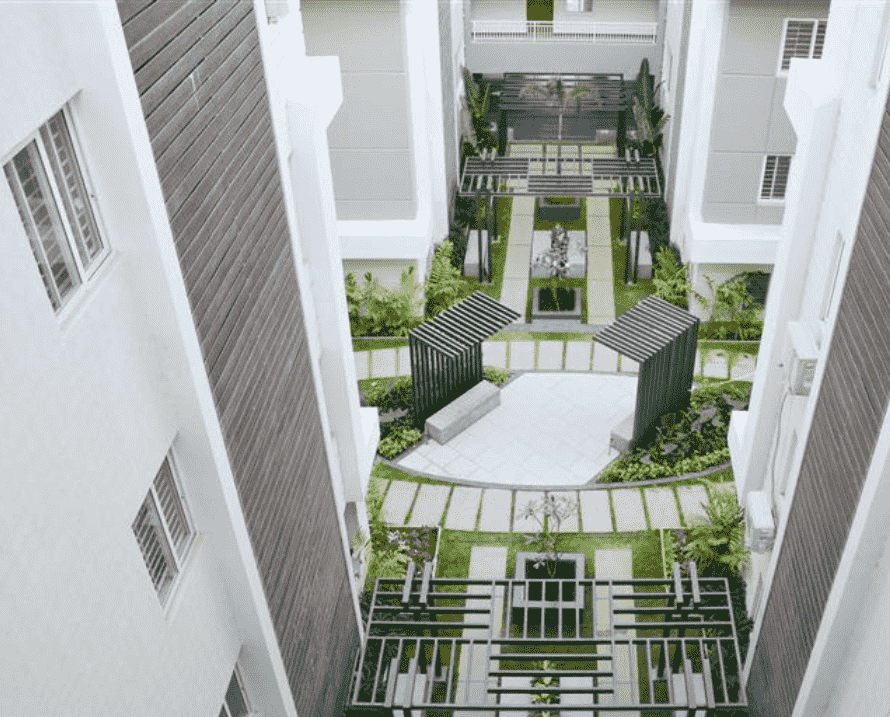Community living is about more than just a home—it’s about meaningful connections. From shared spaces to social events, security, and digital tools, fostering strong bonds enhances quality of life. Discover how projects like Pimento Garden create thriving, connected communities.

Community living is more than just residing in a neighborhood—it’s about building connections, fostering interactions, and creating a sense of belonging. With shared spaces, social events, and secure environments, residents can enjoy a vibrant and enriching lifestyle.
In recent years, the importance of community living has become more prominent as people increasingly seek to live in neighborhoods that foster interaction, mutual support, and a sense of belonging. Community living environments not only provide residents with the comfort of well-designed homes but also create opportunities for building lasting relationships with neighbors. Whether it's through shared spaces, planned events, or a focus on safety and security, there are several ways that can foster connections that enhance the overall quality of life for residents. In this blog, we will explore practical strategies for fostering connections in community living environments and the essential role that real estate developers play in this process.
One of the most effective ways to encourage social interaction in community living environments is through the design of shared spaces. These areas—such as parks, community centers, or shared lounges—serve as the focal points where residents can meet, engage, and form relationships. For instance, a well-designed community garden, playground, or clubhouse allows neighbors to connect in a relaxed and welcoming setting, making it easier to strike up conversations and build rapport.
Shared spaces also encourage collaboration and create a sense of ownership among residents. When people take part in communal activities like gardening or organizing neighborhood events, they feel more connected to their environment and their neighbors. It’s important for community living environments to strike a balance between private spaces and communal areas, as this balance is key to creating a social and supportive community.
In addition to well-designed shared spaces, organized events are another powerful tool for fostering connections in community living environments. Events like community picnics, yoga classes, movie nights, or holiday parties provide structured opportunities for residents to meet and engage with each other outside of their daily routines. These events are particularly valuable in these environments where socializing may not happen spontaneously.
Organizing events in community living settings can also benefit residents in other ways. For example, fitness programs or wellness workshops encourage healthy living, while cultural events promote diversity and inclusion. When residents come together for a shared purpose or goal, they build not only friendships but also a sense of pride and belonging to the community.
Another critical factor in fostering connections within community living environments is ensuring that residents feel safe and secure in their homes and surroundings. The security features of gated community apartments play a vital role in helping residents feel comfortable in socializing and engaging with one another. When people feel secure in their environment, they are more likely to leave their homes, participate in neighborhood activities, and engage with their neighbors.
A well-secured community encourages residents to interact without fear of intrusion or danger. Features like gated entry, security personnel, CCTV surveillance, and secure access points ensure that the community remains safe for all. Moreover, a secure environment fosters a sense of trust and camaraderie among neighbors. When everyone feels protected, it creates a positive atmosphere where residents are more inclined to be supportive and look out for one another.
In community living, residents who collaborate on projects or shared goals can create stronger bonds and a deeper sense of community. Community-driven initiatives like sustainability projects, neighborhood cleanups, or joint fitness programs can serve as an excellent way for neighbors to come together with a shared purpose.
Joint efforts among residents foster a strong sense of pride within the neighborhood. When residents work together to achieve common goals, it reinforces the idea that it is not just about living in close proximity but about being part of a collective effort to enhance the overall quality of life.
In today's digital age, technology can play an important role in fostering connections in community living environments. Digital platforms, community apps, or online groups can serve as tools for keeping residents informed, engaged, and connected. For example, creating a community portal or app where residents can share news, events, or even buy/sell items within the community fosters a sense of belonging and encourages interaction.
These digital platforms can also facilitate the organization of events and collaborative projects, making it easier for neighbors to communicate, stay up to date with activities, and participate in community decisions. Additionally, residents can use these platforms to ask for help, offer support, or discuss common issues they face, thus creating a more inclusive and connected environment. Social media can also be leveraged to promote activities, share photos of events, and celebrate achievements within the community.
Technology is especially beneficial in larger community living environments where personal interaction might be less frequent. It breaks down communication barriers and helps ensure that every resident has access to information, no matter how busy their lifestyle may be.
An essential aspect of building connections in community living environments is creating an atmosphere of inclusivity and diversity. Communities that celebrate diversity and encourage participation from people of all ages, backgrounds, and cultures are more likely to have engaged, supportive residents. Fostering inclusivity in community settings also ensures that everyone, regardless of their demographic or cultural background, feels welcome and valued.
For example, organizing multicultural festivals, language classes, or support groups for different age groups or social interests can promote inclusivity and social interaction. When a community embraces diversity, it strengthens the fabric of the neighborhood and ensures that residents have a richer, more varied experience.
It can be an excellent opportunity for people to learn from one another, share different perspectives, and appreciate the unique qualities that everyone brings to the group. Encouraging inclusivity helps establish a sense of belonging and ensures that the community remains open, welcoming, and supportive to all residents.
Fostering connections in community living environments is essential for creating vibrant, supportive, and thriving neighborhoods. Through shared spaces, organized events, security measures, and collaborative initiatives, residents can form lasting relationships that enhance their overall living experience. Real estate developers and builders have an important role in creating environments that promote social interaction and build a sense of community.
Explore Pimento Garden, a community-driven living space designed for meaningful connections. With well-designed shared spaces, robust security, and opportunities for collaboration, it fosters a thriving community where residents truly experience the essence of community living. At Synthite Realty, we craft homes that meet your needs while fostering lasting relationships. Contact us today to book your dream home!



More Comfortable, More Classy.


We have received your message and will get back to you as soon as possible. If you have any questions, please feel free to contact us directly.
Close